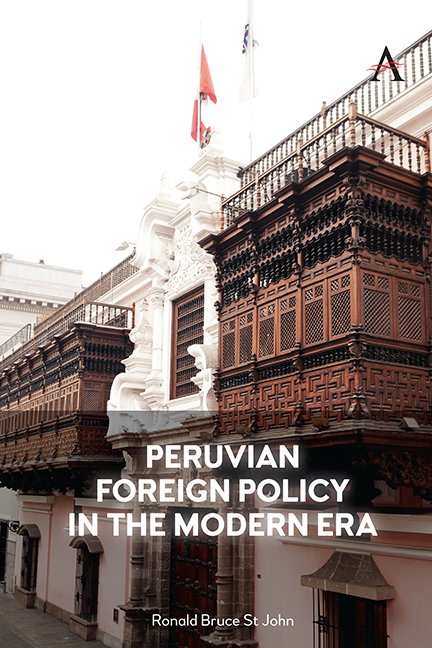Book contents
- Frontmatter
- Dedication
- Contents
- List of Figures
- Acknowledgments
- Abbreviations
- Map
- 1 Introduction
- 2 Alberto Kenya Fujimori, 1990–2000 and Valentín Paniagua Corazao, 2000–2001
- 3 Alejandro Celestino Toledo Manrique, 2001–2006
- 4 Alan García Pérez, 2006–2011
- 5 Ollanta Humala Tasso, 2011–2016
- 6 Pedro-Pablo Kuczynski Godard to Francisco Rafael Sagasti Hochhausler, 2016–2021
- 7 José Pedro Castillo Terrones To Dina Ercilia Boluarte Zegarra, 2021–2023
- 8 Conclusions
- Works Cited
- Index
4 - Alan García Pérez, 2006–2011
Published online by Cambridge University Press: 28 February 2024
- Frontmatter
- Dedication
- Contents
- List of Figures
- Acknowledgments
- Abbreviations
- Map
- 1 Introduction
- 2 Alberto Kenya Fujimori, 1990–2000 and Valentín Paniagua Corazao, 2000–2001
- 3 Alejandro Celestino Toledo Manrique, 2001–2006
- 4 Alan García Pérez, 2006–2011
- 5 Ollanta Humala Tasso, 2011–2016
- 6 Pedro-Pablo Kuczynski Godard to Francisco Rafael Sagasti Hochhausler, 2016–2021
- 7 José Pedro Castillo Terrones To Dina Ercilia Boluarte Zegarra, 2021–2023
- 8 Conclusions
- Works Cited
- Index
Summary
Having left office in 1990 with the lowest approval rating in Peruvian history, former President Alan García Pérez, a brilliant orator and protégé of the legendary APRA leader, Victor Raúl Haya de la Torre, reinvented himself in the course of the 2006 presidential campaign. Billing himself as an elder statesman who had learned from past mistakes, he targeted his message at younger Peruvians with no memory of his disastrous first administration. During the campaign, García promised “responsible change,” embraced the neoliberal model and positioned himself as a defender of the status quo (St John 2006b; Crabtree and Durand 2017, 1, 125–26). In the first round of the 2006 election, García came in second behind Ollanta Humala Tasso, a populist retired army officer, but in the second round, García overtook Humala, winning the presidency with 52.8 percent of the vote (St John 2006c).
Peru experienced strong economic growth during the second García administration; nevertheless, government policies were slow to reduce poverty levels, leaving the majority of Peruvians increasingly unhappy (Economist, 12 May 2008). President García also failed to address pressing social issues, like indigenous rights, corruption, drug trafficking, and human rights, and his attempts to open the Amazon rainforest to exploitation and development led to spirited indigenous protests. In the highlands, indigenous elements protested living and working conditions at multiple large mining sites, including La Oroya, considered one of the 10 most polluted places in the world. Additional sources of discontent included coca farmers opposed to coca eradication efforts, informal miners rejecting efforts to integrate them into the formal economy, and splinter groups of the Sendero Luminoso guerrilla–terrorist movement active in remote regions of the country (La República, 4 June 2011). Constrained by limited popularity and the absence of a legislative majority, the García administration appeared largely content with strong macroeconomic figures, ignoring the paradox between economic growth rates among the highest in the region and dysfunctional governance. President García focused on his coastal base mostly ignoring the interior and failing to bridge deep socioeconomic divides in a country marked by severe inequality and widespread social discontent (St John 2006d).
Blending Old and New
In his 28 July 2006 inaugural address, President García stressed domestic issues.
- Type
- Chapter
- Information
- Peruvian Foreign Policy in the Modern Era , pp. 31 - 40Publisher: Anthem PressPrint publication year: 2023



